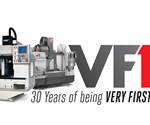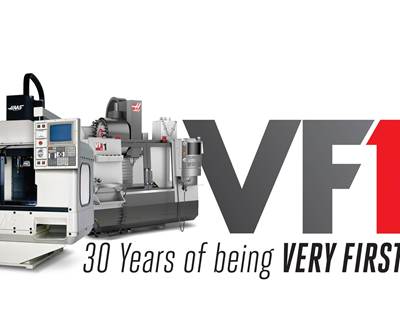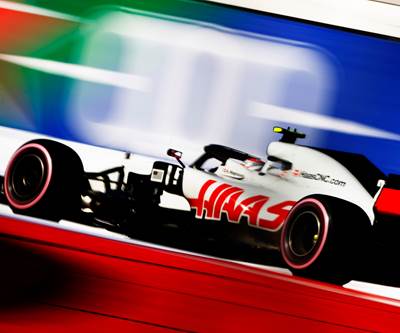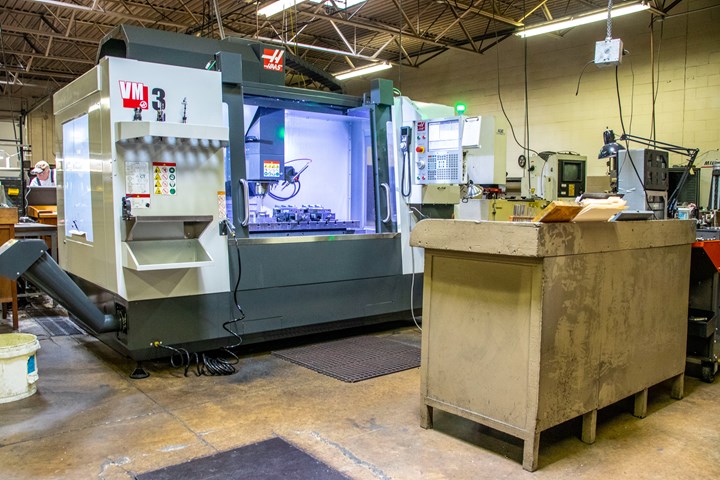
This Haas VM-3 mold machine is part of Bastech’s arsenal of machining technology that has increased machining time and produced quality precision cavities vital for face masks. Photo Credit, all images: Bastech Inc.
At the start of 2020, Ben Staub never would have guessed that Bastech Inc. would be a personal protective equipment (PPE) manufacturer. That was not the plan. However, COVID-19 changed all of that, and for the better. Not only was this small manufacturer able to produce desperately needed face masks due to its 3D printing, machining, tooling and molding experience, it also launched a new product line. And, the company’s machining technology was a significant contributor to this rapid growth.
Staub is president and owner of Bastech based in Dayton, Ohio, which employs a team of 28 people across a 22,000-square-foot manufacturing facility producing low-volume plastic injection molds and investment castings for which Haas machine tool technology has been essential.
Bastech has been a Haas customer since 1999, the same year the shop purchased its first Haas VF-3 vertical machining center, followed soon after with a Haas VF-0 vertical machining center. The shop also houses seven different AM technologies—from stereolithography to multi-jet printing—via a full polymer lab, wax printers for investment casting patterns and three metal printers.
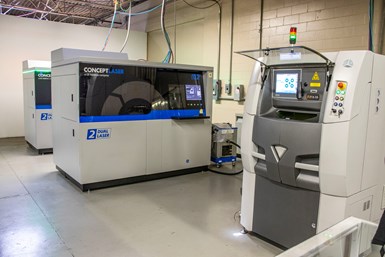
This Bastech cell includes Concept Laser M200 dual-laser systems that use PBF technology to 3D print metal parts and tooling.
They use a small 3D Systems Pro-X 200 and two large Concept Laser M200 dual-laser systems based on powder bed fusion (PBF) technology. One of Bastech’s three printers is dedicated to aluminum and the other two run a wide variety of metals. For moldmaking, they use a lot of maraging and 17-4 stainless steel because they can be hardened.
The demands to produce a large amount of P20 pre-hardened tool steel (34 HRC) and aluminum tooling very quickly for PPE drove the decision to purchase a new Haas VM-3 moldmaking machine.
“The VM-3 just made a lot of sense for us,” Staub says, “The higher efficiency machining, wireless intuitive probing system and extended y-axis come in handy for a variety of projects, and the high-speed features improved surface finish, reducing secondary polishing.” In addition, he notes that the VM-3 enables the shop to move a lot faster with its through-the-spindle coolant and control of chip size, and its contouring capability helps to manage their volume of laser scanning work.
Even so, Operations Manager Scott Young says it’s all about accuracy. “Accuracy is really what we’re looking for with the Haas VM-3. We want highly accurate and fit areas. We’re machining parts with tolerances of plus or minus half a thousandth. That’s a tight tolerance for mold work, but the Haas VM-3 handles it.”
Making Masks
The pandemic put many manufacturers to the test as teams jumped in to help produce various PPE, including Bastech. However, in this team’s case, they decided to develop their own mask system and under a new company.

P-Tech R Series Pro Grade mask and replacement filters.
“When COVID-19 hit and the news about the inadequate results of some 3D-printed, and low-volume-produced masks surfaced, we came up with our own product line called P-Tech for protective technologies and developed our R and S series of masks,” Staub says.
Staub and his team came up with a thermoplastic elastomer mask system with an overmolded cartridge insert. “Our design is cost effective and offers a complete seal around the outside to prevent the leakage many users of traditional N95 masks often experience. Plus, the filter system is disposable and our thermoplastic elastomer is a material proven for resuscitator bags. So, you can put this mask in the dishwasher to clean it or wipe it with isopropyl alcohol and put it back on,” Staub says.
Bastech received a grant for this project—like other manufacturers—that helped them purchase the new equipment and to help solve the PPE shortage issues. The Ohio Development Services Agency awarded the grant for reshoring PPE to be manufactured in the state of Ohio.
Dual Approach to Making Molds
To quickly make the molds to produce these masks, Bastech opted to take a two-process approach the shop was tooled up to do—additive and subtractive manufacturing. Bastech started the original prototypes for the R series masks on its existing Haas VF-3 and the VF-0 vertical machines, but when they needed to take the project into production, they added the Haas VM-3, which is designed specifically for moldmaking, yet offers Bastech versatility to take on a variety of work.
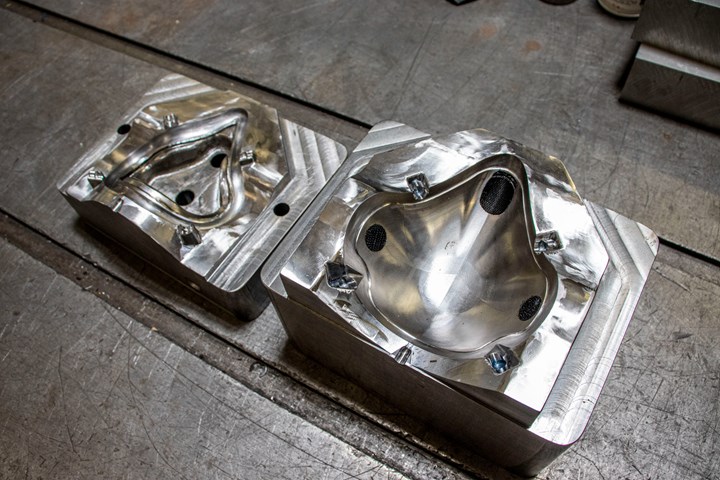
The mold for the P-Tek R-Series Pro Grade mask was machined by Bastech on its Haas VM-3.
It’s mostly traditional cavity and core milling. Some they produce additively and then perform secondary machining for seal-offs or finishing part surfaces and ribs. Basically, they use the other VMCs to machine the tooling and ejector plates and use the VM-3 to finish the cavity work.
Staub explains that when you have an open cavity, doing almost all of the geometry on a mill is the best way to go, especially with what they can now accomplish with the high-speed VM-3. But, if the mold has deep ribs or requires a lot of EDM work or sharp corners, then additive is the way to go.
With additive manufacturing (AM), Young wants to get a shape that only requires polishing before it goes into the mold. Bastech is creating a hollowed-out effect to minimize the necessary amount of material and processes.
Simply put, they don’t want to machine if they don’t have to. In some cases, the team may have to machine a tight-tolerance area, which is where the Haas VM-3 comes into play. “We often build the part upside down purposely, so we can machine it on the build plate before we take it off the plate and finish the other side,” Young says.
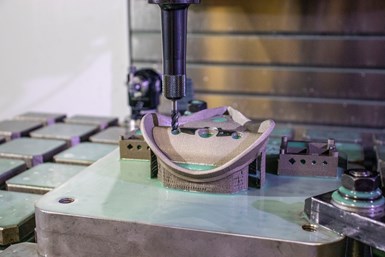
This lifter for holding filters in place was machined on a Haas VM-3 after being printed on a GE Pro-X 200 3D metal printer.
For example, using additive metals, Bastech was able to build a lifter that is fastened to the ejector system of the mask mold with solid rods. “The lifter is holding the filter in place so that we can mold a rim around it for the seal,” Young says. “We want the lifter to be light, so we hollowed everything out. As a result, it uses a very minimal amount of material.”
Bastech has completed the majority of the product development as far as forming the filters, the design, prototyping and plastic injection mold build. They also changed from hydraulic presses to a new fully electric, 270-ton Sumitomo injection molding machine dedicated to this product line, which runs four cavities of the masks at one time. “Every 30 to 50 seconds, we are dropping four masks for mass production,” Young says. Moreover, the company sold the mask to a local hospital.
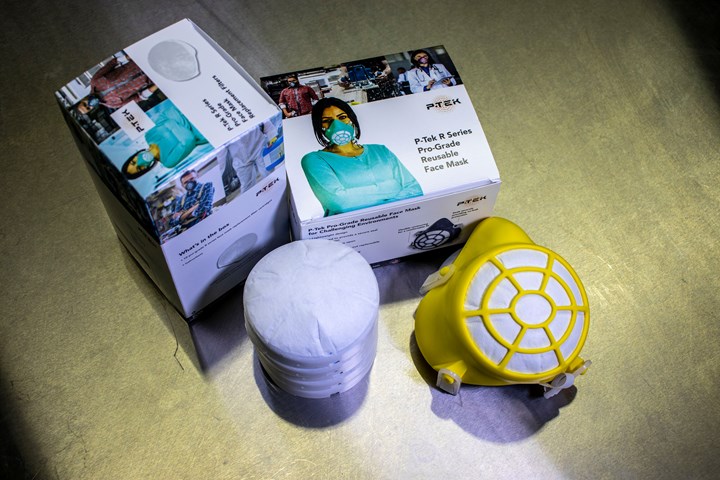
Bastech used its subtractive and additive technology to design, prototype and manufacture the mold for the P-Tec R Series Pro Grade mask and replacement filters.
They are now working on decorating techniques for personalizing the mask systems as well as some accessories, including a snap-on face shield, another filter system option and a SAL valve to enable its use for applications like sandblasting where the user is not concerned with filtering the exhalation, only about filtering the inhalation.
“The accuracy, speed and cooling capabilities of the VM-3 fit nicely with our additive technology, yielding quality precision parts for our customers—whether that is an injection mold, a wax mold or piece part production. We can do all of it,” Young says.
Bastech is even getting to the point where the team wants to start challenging the VM-3 to see how fast they can push it and to start running more lights-out manufacturing. “We want to keep pushing,” Staub says.
Related Content
Moldmakers Deserve a Total Production Solution
Stability, spindle speed and software are essential consideration for your moldmaking machine tool.
Read MoreThe Benefits of Hand Scraping
Accuracy and flatness are two benefits of hand scraping that help improve machine loop stiffness, workpiece surface finish and component geometry.
Read MoreHow to Eliminate Chatter
Here are techniques commonly used to combat chatter and guidelines to establish a foundation for optimizing the moldmaking process.
Read More3D Printing Enables Better Coolant Delivery in Milling Operations
Just like 3D printing enabled conformal cooling channels in molds, additive manufacturing is now being used to optimize coolant delivery in cutting tools.
Read MoreRead Next
Haas Automation Celebrates Thirty Years of the Haas VF-1
In 2018, Haas Automation celebrates 30 years of the Haas VF-1 vertical machining center. The company will celebrate with a “Very First” campaign that culminates with the debut of the very first VF-1 at IMTS 2018 in Chicago.
Read MoreCAMplete Partners with Haas F1 Team
American Formula One team stays on the right path with software from CAMplete
Read MoreAre You a Moldmaker Considering 3D Printing? Consider the 3D Printing Workshop at NPE2024
Presentations will cover 3D printing for mold tooling, material innovation, product development, bridge production and full-scale, high-volume additive manufacturing.
Read More


